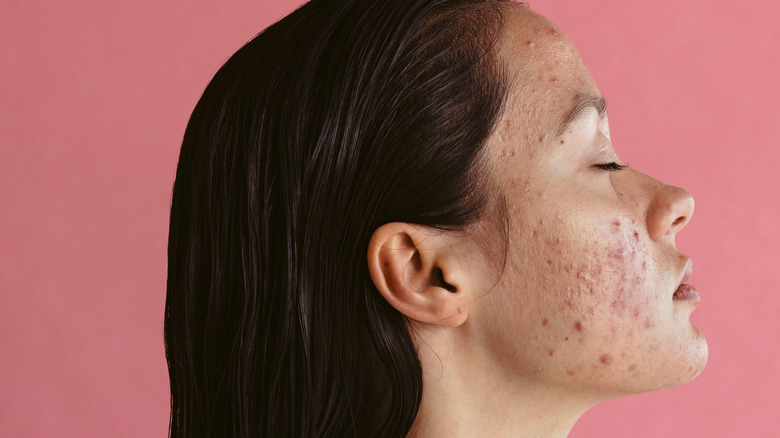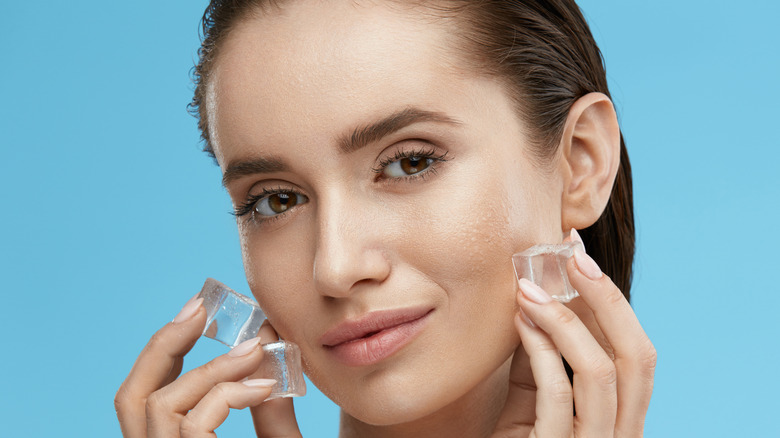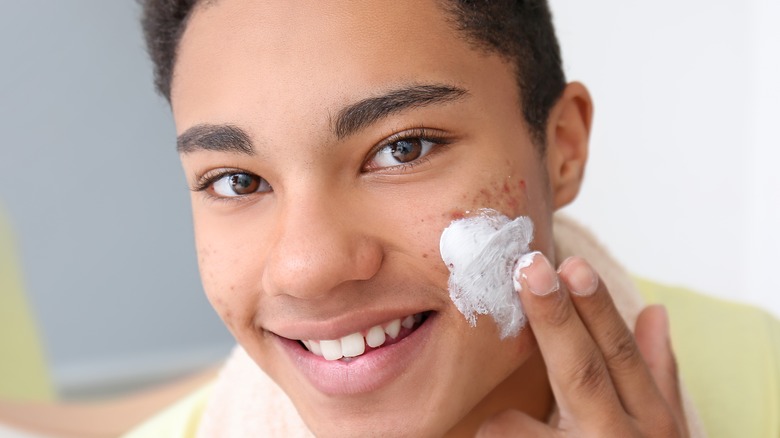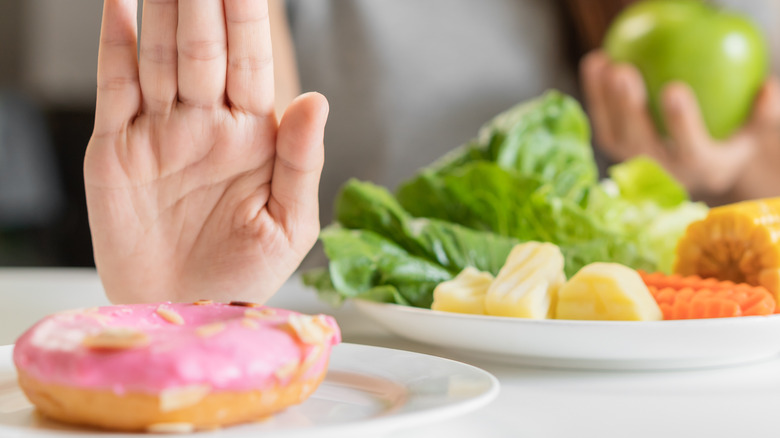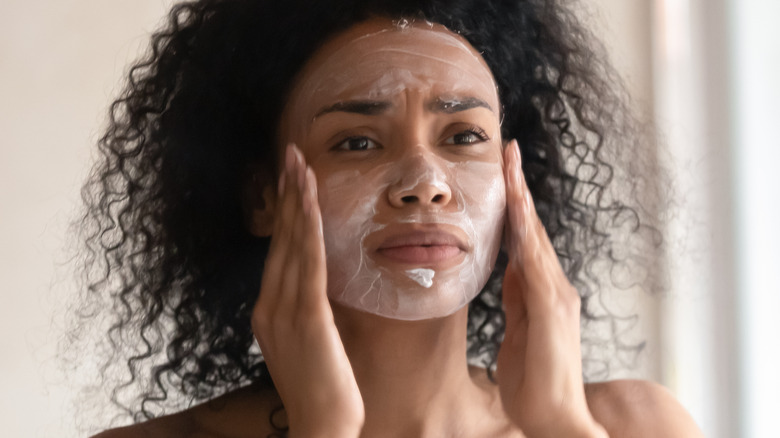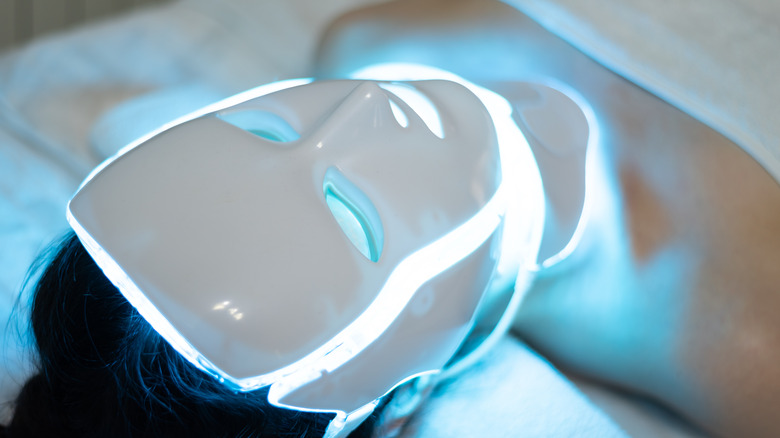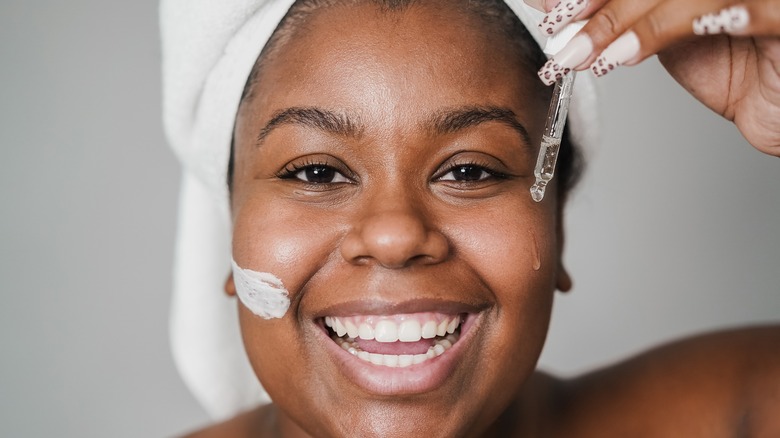Tips For Reducing Redness From Acne
That pimple may look very tempting to pick open or squeeze, but here's yet another reason not to: redness. For people with acne, redness has various causes but all roads lead to inflammation as the main culprit. When you pick at your blemishes or pimples, you aggravate the surrounding skin, causing inflammation and leaving angry pink or red marks around your acne, per the American Academy of Dermatology Association. La Roche-Posay confirms that picking at your pimples can spread the acne-causing bacteria to other parts of your face, causing more breakouts and, in turn, more redness. Other times, redness from acne is due to post-inflammatory erythema (PIE), or in this case, post-acne erythema (via WebMD).
Inflammation is part of the skin's natural healing process against acne, but redness can persist when blood flow during this process is halted, or when the blood vessels beneath the skin, called capillaries, are damaged. Either way, redness is no fun and can be just as annoying and damaging to one's self-esteem as acne itself. Luckily, there are a few ways to help relieve acne-related redness.
Ice it out
Think about how ice is your go-to weapon to calm any other swelling you may have on your body. It's the same principle here, only on small swellings on your face. Ice is great for redness because it constricts the capillaries supplying blood to the skin, reducing blood flow and stopping inflammation (via 28 Day Skin). According to DERMAdoctor, ice applied to swollen, cystic pimples also shrinks them and reduces pain. Try it today by placing an ice cube in a clean washcloth and holding it to the red pimple for a minute.
Never skip sunscreen
Will sunscreen ever stop being that girl? No, because apart from protecting our skin from skin cancer, it can also help with redness caused by acne. According to Colorescience, sun exposure can worsen your acne and cause more inflammation. The sun also dries out your skin and causes it to overcompensate by producing pore-clogging and acne-forming sebum, per Bioré. Applying sunscreen daily and limiting sun exposure will reduce possible inflammation from the sun's rays and protect you from hyperpigmentation and sunburn, which can worsen your redness.
You are what you eat (or your inflammation is)
Sadly, certain foods in your diet can cause or worsen acne, and in turn, skin redness. On The Dermatology Specialists' list of inflammation-inducing foods are alcohol, sugar, milk, and chocolate. These foods can alter hormone levels and trigger irritation, leading to acne and the redness that follows. It may be hard to cut them off, but there is a bit of leeway with a few of them. For one, try dark chocolate instead of milk or white chocolate, and cut your alcohol intake. You can also incorporate anti-inflammatory foods like kale, salmon, brown rice, and carrots in your diet (via Better Nutrition).
Add soothing skincare ingredients to your routine
Red, inflamed skin is angry skin and does not need any further aggravation during the healing process. To help your skin heal, consider adding gentle skincare products that are soothing. Be on the lookout for ingredients like ceramides, colloidal oatmeal, green tea, and centella asiatica or tiger grass (via Exclusive Beauty Club). These ingredients improve your skin's moisture barrier and reduce irritation. Also, avoid aggravating skincare products like physical scrubs which can cause microtears and increase redness, per Hers.
Try an LED facemask
If you're up for a little splurge, try an LED facemask. Tested and trusted by several celebrities and skincare experts, LED light therapy is a non-invasive treatment where lights of different wavelengths are used to tackle skin concerns like aging, acne, and inflammation. As Laser Clinics Australia mentions, yellow LED light soothes and hastens the healing process of inflamed skin, while Dr. Dennis Gross recommends the blue light setting which soothes inflammation and kills acne-causing bacteria.
Say yes to niacinamide
Niacinamide is an ingredient offered in almost every skincare line, and for good reason too. The skincare experts at Kate Somerville outline the regulation of sebum production as one of the many benefits of niacinamide. Excess sebum can clog pores, leading to acne. Niacinamide's ability to regulate sebum production reduces acne and the redness that comes with it. Niacinamide is also anti-inflammatory and reduces swelling on the skin (via Acne Support). If you need a little help with your redness, niacinamide at the recommended dosage of 4 to 5% concentration might do the trick, per INCIDecoder.
